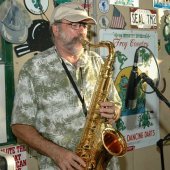-
Posts
6,960 -
Joined
-
Last visited
-
Days Won
6
Everything posted by Notes_Norton
-
"Rainy Night In Georgia" - Brook Benton Four strikes trying to embed this wonderful song. So here is a link https://www.youtube.com/watch?v=X7VsQwVSqXw https://youtu.be/X7VsQwVSqXw https://www.youtube.com/watch?v=bDRbF80NKDU https://youtu.be/bDRbF80NKDU I guess it must be Firefox but I'm not a Google/Chrome fan (voluntary spyware IMO). Notes
-

I haven't posted a music cartoon in a while
Notes_Norton replied to Notes_Norton's topic in The Coffee House
well at least nobody is walking out on you or complaining ;) -
Sweet Lorraine - jazz standard sung by many including Nat "King" Cole
-

I haven't posted a music cartoon in a while
Notes_Norton replied to Notes_Norton's topic in The Coffee House
Been there - done that Dress rehearsal. "OK, what do we need work on?" -

I haven't posted a music cartoon in a while
Notes_Norton replied to Notes_Norton's topic in The Coffee House
I paid my dues in bars, 6 nights a week, and Thursday's were always slow. The day before payday I guess. Two salesmen who would rather watch a ball game on TV. No matter how many people are in our audience, we do our best. It's the only way we know. I don't play 6 night gigs anymore. When I was young, and old time told me that once you star playing yacht clubs, country clubs, and retirement developments, you never want to go back to the bars. He was right. I can make in 2 nights what I used to make in 6. Of course I have to set up and tear down every night, but that's fine with me. I need the exercise (or so I tell myself). The closest thing we have to a night club now is a marina. One day a week during lunchtime, and in October it marks the start of our 12th year. http://www.s-cats.com And I also write aftermarket products for Band-in-a-Box at http://www.nortonmusic.com Making a living and having fun while I do it. Life is good. Notes -
Thanks for the YouTube tip, I'll give it a try (I use Firefox for a browser - hope it works with this). BTW I LOVE "Dazed & Confused" Gotta follow that with: "Love Or Confusion" - Jimi Hendrix https://youtu.be/tIuf_SPvX-Y I clicked the "share" button, pasted it above and sadly it didn't work. Perhaps it doesn't like Firefox But I copied the YouTube link ( like I did in Mahogany) and it works here. I think it's love AND confusion
-
Kick and foot closed hi-hat
-

I haven't posted a music cartoon in a while
Notes_Norton replied to Notes_Norton's topic in The Coffee House
Must be a Thursday night ;) I've played Thursday nights when all the guests came dressed as tables and chairs! -
Theme From Mahogany (Do You Know Where You're Going To) - Diana Ross https://www.youtube.com/watch?v=3DnxTvqOe-I https://www.youtube.com/watch?v=VOH6SzDX3l4 Take your pick, I couldn't get either one to embed Berry Gordy left Detroit and went to LA to try his hand at movie making, this was his second attempt. When the band I was in was being courted by Motown (in Detroit) I met him but thought his name was Barry instead of Berry.
-
-
Behind The Rain - Gato Barbieri (I listen to many different kinds of music - Gato was a unique sax player who eventually quit recording because after he got popular, the record companies wanted to dictate what he would play)
-
Suite: Judy Blue Eyes - Crosby, Stills and Nash Superb harmonies on a nice tune. https://www.youtube.com/watch?v=cMJug2iz3NA
-
Tangled Up In Blue - Bob Dylan Generally I don't like Dylan's singing, but I like this song and the way he does it
-
"Blue Rondo A La Turk - Dave Brubeck Quarted The first 9/8 jazz song I ever heard and IMHO one of the Dave Brubeck Quartet's best songs (Paul Desmond is my all-time favorite alto sax player)
-
Well if they take you away in a straitjacket, you must by like Naploeon XIV in "They're Coming to Take Me Away, Ha-Haaa!" It seems it's an early form of Rap music. https://www.youtube.com/watch?v=BXOwNOf2QXY For some reason I can't get the above video to embed here. I'll try another link. ... Ah this one works!! (not that this song is worth the effort)
-
"On The Road Again" - Canned Heat
-
Corner Pocket - Count Basie Orchestra (Of that era, Basie was one of my favorites) https://www.youtube.com/watch?v=qBuYSVrFBLA
-
Ain't Gonna Bump No More (With No Big Fat Woman) - Joe Tex
-
My wife plays guitar too. If I go first they will be in good hands. Bob
-
Alexander Nevsky, Op. 78: VI. Field of the Dead - Sergei Prokofiev
-
"I Can Beat Your Drum" - Fever Tree https://www.youtube.com/watch?v=C71G1atPWzY (An obscure hit from the psychedelic era of rock music) PS I haven't figured out how to post a youtube so I posted the link
-
"White Rabbit" - Jefferson Airplane lyrics: ...go ask Alice...
-
"Physical" - Olivia Newton-John lyrics: ...Let me hear your body talk...




